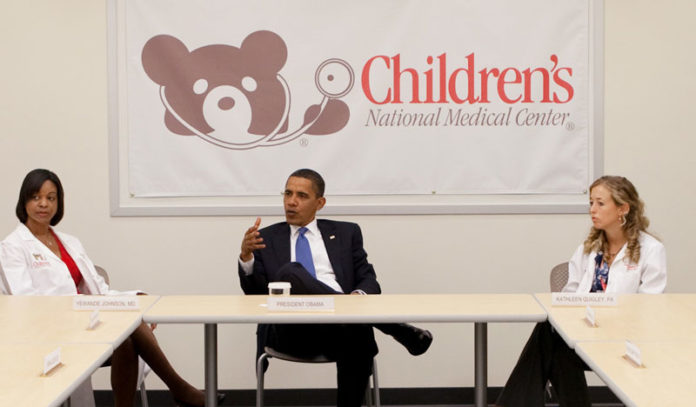Following President Obama’s State of the Union Speech, the Association of American Physicians and Surgeons (AAPS) put out a scathing press release critical of Obama’s healthcare strategy and the Affordable Healthcare Act, also known as Obamacare.
“The mood of the President, his cheering section in Congress, and his supporters in the media appeared to be euphoric,” states Dr. Jane Orient, Executive Director of the Association of American Physicians and Surgeons. “This reflects a state of deep denial about the true state of our nation.”
The organization, that has represented private doctors since 1943, has been an ongoing critic of Obamacare and promotes “cash-friendly” practices.
AAPS noted that while Obama claims that, “about 10 million uninsured Americans finally gained the security of health coverage” the majority of those who are newly insured have been added to the Medicaid rolls . . . which is creating an immediate crisis.
On December 31, 2014, a temporary “bump” in Medicaid reimbursements expired. The result is a 43% cut to primary-care physicians who treat Medicaid patients.
Additionally, on March 31, a little known piece of legislation expires called the SGR Patch. SGR (Sustainable Growth Rate), ties the price of care and medication for Medicare patients to inflation.
Since 1997, an “SGR Patch” has been passed by Congress that puts the inflation-based pricing on hold. If the patch is not renewed by March 31st, physicians face at least a 24% cut in Medicare reimbursements.
Rather than repeal SGR, Congress simply patches the problem each year which places a burden on doctors and the associations that support them to lobby Congress each year for another patch – driving up costs.
The reimbursement cuts for government healthcare programs goes beyond profits for physicians but creates an access issue.
From 2009 to 2013 alone, the number of doctors who opted out of Medicare increased by 157%.
While a strong majority of doctors who accept Medicare and Medicaid remain very high, those who can afford to sustain significant reimbursement cuts are yet to be seen.
Basic rules of business apply to doctors and their practices.
If the cost of medication for instance, with oncology doctors, remains the same, yet the government’s reimbursement drops by 43% or more, doctors face the reality that they may be losing money by treating Medicare and Medicaid patients.
Specifically for drugs for cancer care, the costs for medication alone can reach $250,000 per year.
To place that in perspective, imagine a car dealership that sells new cars to customers for $60,000 yet has to pay $100,000 for the vehicle.
Clearly, that dealership would be closing its door quickly.
In the case of honest, independent doctors, they are forced with the choice of taking a loss on treating patients in government programs; raising the costs to non-government subsidized patients or closing their doors.
As Free-Market Economist Milton Friedman quipped, “there ain’t no such thing as a free lunch” – or free healthcare.






























